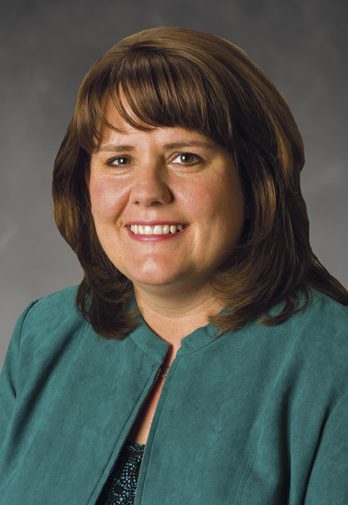COMMERCIAL INSURANCE: What’s next?
A hardening market with still-abundant capital means carriers will respond to the right risks
By Joseph S. Harrington, CPCU
At the start of 2020, much of the talk in commercial insurance seems to center on rate hikes and tightened underwriting in both property and liability lines. This apparent hardening of the market comes at a time when earnings have been hit by property catastrophes and growing liability judgments, but with resilient and abundant capital still eager to address a growing array of risks—albeit profitably.
“Signs of a hardening market are clearly evident in the form of increasing rates across most customer segments and lines of coverage,” says Carrie Busic, commercial lines products leader for Westfield Insurance. “That being said, there will definitely be areas where carriers make strategic investments in their overall book profile.
“Most carriers remain well-capitalized and will strategically invest in areas where they want to develop their capabilities and grow,” she adds.
In property lines, Busic finds that, “for the most part there is still enough capacity, but there are exceptions,” noting in particular that Westfield is finding it difficult to place reinsurance on builders risk coverage for wood-frame construction.
“We are seeing a narrowing of coverage terms and conditions, especially in catastrophe-prone areas,” she explains. “We are seeing increased use of separate wind/hail deductibles, limited appetite for certain classes of business in hail-prone areas, as well as premium increases in those areas.”
Michael Teng, assistant vice president of regional product pricing and underwriting for Sentry Insurance, says, “Carriers are taking a hard look at coverage terms and conditions along with underwriting standards to increase deductibles and put tougher requirements on building upgrades and protection.
“Southeastern states are hit the hardest since they are prone to storms,” Teng adds, “but other parts of the country are also seeing positive rate increases as carriers try to shore up surplus across the board.”

—Carrie Busic
Commercial Lines Products Leader
Westfield Insurance
Cyber
Cyber insurance makes for a never-ending challenge, says Mike Costello, principal of Evolve MGA.
“The cyber insurance market landscape is still like the ‘Wild West,’” he says, “with more than 500 markets offering coverage. To make matters more complicated, hackers change their attack methods all the time, so best-in-class cyber markets should have to upgrade their coverage based upon current trends in hacking.”
According to Costello, “The strongest cyber markets will have coverage that addresses ransomware, funds transfer fraud, and ‘cryptojacking,’” in addition to more established exposures for hacking, viruses, and data breaches. (“Cryptojacking,” or “cryptomining,” refers to a new form of malware that embeds itself within computer systems for the purpose of detecting and stealing cryptocurrencies.)
“The markets that have entered the cyber space have created an incredibly soft market with inconsistent pricing and coverage,” Costello says. “These variations create an opportunity for brokers to sell coverage over pricing.”
Take advantage of the opportunity while you can, Costello advises. “One thing is clear: The market will eventually harden,” he says. By 2025, he predicts, “claims handling will define and solidify the [market positions] of the current cyber [carriers].”
Cyber blends
“The most common misconception about cyber insurance is that it is mainly a privacy liability coverage,” Costello says. “As a result, most cyber markets use third-party data breach law firms to handle their claims.
“Yet, more than 90% of cyber claim costs can be attributed to first-party losses due to ransomware and funds transfer fraud,” he continues. “Therefore, it is essential that forensic experts be among the first points of contact on a cyber claim. Industry-leading cyber markets will have invested in hiring in-house forensic experts to limit claims before they get out of control, decreasing the overall cost of claims.
“Traditional commercial lines products are excluding cyber coverage, as they have been brought into cyber claims they never intended on covering,” Costello adds. At the same time, he says, most cyber insurers are excluding traditional property and liability losses, but some cyber markets will cover the costs to replace computer hardware.
“Today,” he notes, “the best cyber markets blend coverages to include traditional types of commercial coverage with triggers for losses caused by computer hacking.” As an example, Evolve MGA offers third-party management liability coverage that includes cyber coverage normally excluded under directors and officers liability policies.
Liability
The dynamics driving a hardening of the market for commercial property insurance have counterparts on the liability side of the business.
“Certain aspects of the liability market are hardening rapidly, particularly excess/umbrella, transportation and a few other pockets,” says Josh Chassman, senior vice president and casualty broker for CRC Insurance Services. “We haven’t yet reached the pricing of the last hard market, but the feedback I am getting from carriers is that the hardening will continue for a while.
“The common perception is that an increase in liability verdicts are driving much of this, as judgements for damages are climbing at an unprecedented rate,” he adds.
“As for coverage, for the first time in a while, as prices rise, carriers are pulling back some coverages, and approaching buyers with a ‘take-it-or-leave-it’ attitude,” Chassman says. “As there are more premium dollars in play, the carriers can be pickier, and can choose not to cover things they don’t want to cover.”
Busic adds: “Over the last six months, many facultative reinsurers reduced their willingness to provide umbrella capacity. Previously, one or two facultative reinsurers would share a specific layer of exposure; today it might take four to five reinsurers to share the same layer.
“With the growing frequency of claims reaching beyond primary layers into the umbrella,” she adds, “many carriers are seeking to reduce umbrella limits, especially in high hazard classes or industries that have been prone to excess claims.”
Busic points out that social inflation, especially in plaintiff-friendly court jurisdictions, is driving an increase in construction defect complaints. “Consequently, more carriers are offering contractor’s errors and omissions coverage,” while seeking to curb exposure under contractors’ commercial general liability (CGL) policies, such as by excluding punitive damages by endorsement.
Teng sees much of the same. Commercial auto rates may have “topped out” after several years of increases, he says, but there appears to be “rate movement” in general liability insurance, along with more substantial hikes in rate for excess and umbrella coverage, after a period of relatively flat rates.
“This is driven by large rewards handed out in litigation, and the overall inflation pushing litigation cost into excess layers,” Teng says.
Busic says that complaints of sexual misconduct are driving an increase in employment practices liability (EPL) claims against officers and directors, not necessarily because they are engaged in the misconduct, but for failing to take action to ensure a respectful working environment.

—Michael Teng
Assistant Vice President, Regional Product Pricing and Underwriting
Sentry Insurance
AOB still a problem
While Florida has enacted legislation to curb abuses in assignment of benefits (AOB) under a property policy, the problem AOB produces for insurers has not gone away, says James Orandash, executive casualty general adjuster for Engle Martin & Associates, a leading claims adjusting firm.
While policyholders are generally prohibited from assigning a policy to a third party without the insurer’s permission, they may be able to assign the benefits they receive under a policy to a third party. Assignment of benefits is common in auto and health insurance, where practitioners are paid directly rather than forcing policyholders to pay and then seek reimbursement. AOB has driven up property insurance claim costs in Florida as home owners have assigned benefits for water and storm damage to repair contractors.
“With an assignment in hand, the contractor can do its job, then bill the insurer,” says Orandash. “State law allows plaintiffs’ attorneys to be richly compensated with little downside if they dispute what an insurer paid for an AOB claim.
“Secondly, court decisions allow insurers to be kept in the dark early on about the cost of an assigned claim,” he adds. “This tempts some providers to inflate the cost of their services. But, if the insurer wins, the plaintiff owes the insurer nothing.”
Orandash sees similar dynamics at play in third-party liability claims, where carriers are reporting that “social inflation,” a term used to describe precipitous hikes in jury awards, are driving up losses.
“We see the same trends in commercial auto and general liability as in first-party property,” he says. “The threat of protracted litigation is typically the decisive factor in an insurer’s willingness to accept a settlement rather than take a stand based upon the facts and the law.”
Among the tactics Orandash sees being employed by claimants is delay in giving notice to the insurer of a likely or pending liability claim. In cases, he says, plaintiffs’ attorneys will wait for a month or more to increase the chances that any recordings of an alleged incident are erased or copied over. (Storage space is at a premium in today’s sophisticated surveillance systems.)
“Typically, a video system will copy over existing footage every seven days,” he says. “Often, a business owner is not made aware of an incident involving a claimant when it happens, or the claimant indicates he or she is not injured.
“Then there is no reason to retain the footage,” he says. “In my day-to-day claim handling, I am encouraging business owners to use flash drives to save video.”
In Florida, Orandash is also finding plaintiffs’ attorneys quick to file “civil remedy notices (CRNs)” when they are not satisfied with a settlement offer. A CRN is a legal action required before filing a bad faith suit against an insurer and, like a lawsuit, a CRN triggers a series of mandatory and costly responses by the insurer.
Agents and brokers
The ability to specialize is key, according to Craig Welsh, Westfield’s chief distribution officer.
“Specialization can mean a lot of things, but it generally involves knowledge about specific industries and/or products,” he says. “Given that a specialized approach is more focused on the needs of the customers, we often see higher conversion and retention rates in our specialty niches.”
Welsh credits Westfield’s carrier service centers, which provide customer service and administrative support, for allowing Westfield’s agency partners to free up resources for investment in technology and new business acquisition. “Our carrier service centers can have a positive impact on agency margins,” he says. “In our service centers, we saw premium grow by nearly 30% in 2019 for our top agencies. Centralizing certain operations for defined types and classes of business can yield quick and sustainable gains in margins.”
Producer expertise is also critical to Sentry’s success, particularly in the transportation sector, according to Nick Saeger, Sentry’s assistant vice president of pricing, products, and underwriting for transportation.
“When clients feel that their agent is as knowledgeable, or even more knowledgeable, than themselves, they can feel and see the value created,” he says. “Agents who understand the industry they serve and the products they offer, will be best able to serve and retain clients.”
For Chassman, “communication—early and often—is paramount for account retention.”
“Surprises in this market are not a good thing,” he adds. Speaking of liability coverage, Chassman says, “It is unclear on any given account if certain layers or coverages will move from the standard to the E&S market.
“Many standard markets are exiting placements, or shortening their lines, and creating a lot of opportunity. As always, asking clients how you can help them should serve to create new opportunity.”
For more information:
CRC Insurance Services
www.crcgroup.com
Engle Martin & Associates
www.englemartin.com
Evolve MGA
www.evolvemga.com
Sentry Insurance
www.sentry.com
Westfield Insurance
www.westfieldinsurance.com
The author
Joseph S. Harrington, CPCU, is an independent business writer specializing in property and casualty insurance coverages and operations. For 21 years, Joe was the communications director for the American Association of Insur-ance Services (AAIS), a P-C advisory organization. Prior to that, Joe worked in journalism and as a reporter and editor in financial services.






